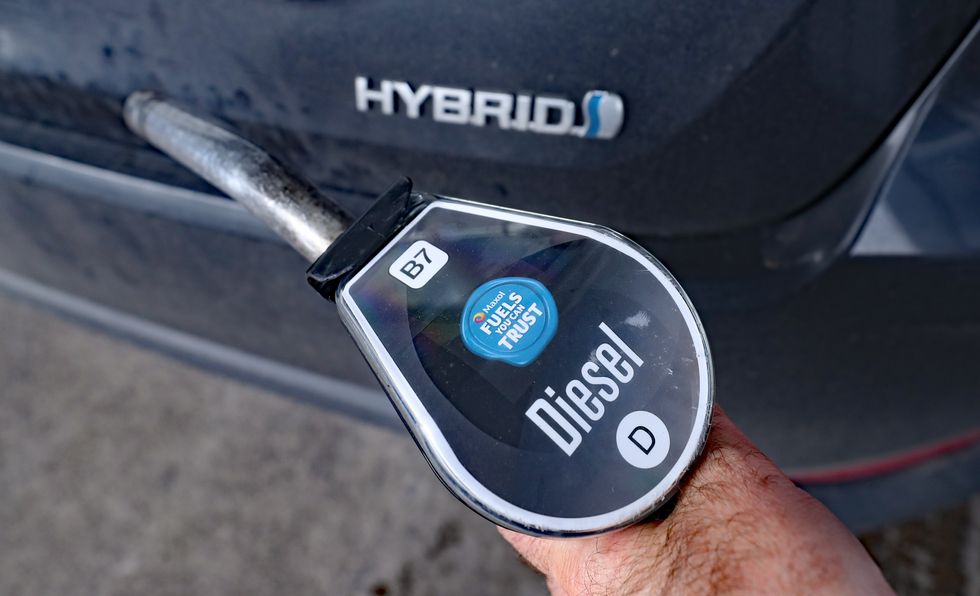WATCH: Ed Miliband’s electric car target brutally torn apart by experts
GB NEWS
A study by the University of Southampton found that the weight of an electric vehicle could cause more brake pad emissions than diesel cars
Don't Miss
Most Read
Trending on GB News
Electric vehicle brake pads could cause more pollution than diesel cars with risks of increasing pollution levels as the UK transitions to net zero, a revolutionary study has revealed.
According to new research from the University of Southampton, certain types of brake pad emissions, such as the ones found in electric cars, can be more toxic than diesel exhaust fumes.
The study found that microscopic particles from commonly fitted brake pads containing high levels of copper posed increased health risks when breathed in.
Scientists discovered that these particles could be more harmful to human lung cells than exhaust emissions from diesel vehicles.
Do you have a story you'd like to share? Get in touch by emailingmotoring@gbnews.uk

Due to the heavy weight of electric cars, the report found they produce more brake pad emissions
GETTY/PA
The findings come at the same time drivers continue to transition to electric vehicles, with researchers warning that brake dust remains a significant source of pollution even in zero-emission cars.
As part of the Zero Emission Vehicle mandate, more drivers will have to eventually shift to an electric car with the UK having ambitious goals to have 100 per cent new car sales electric by 2035.
But the research suggests the ramp-up of electric vehicles could be doing more harm than good. It detailed how non-exhaust pollution sources now account for the majority of vehicle particulate matter emissions across the UK and parts of Europe.
Brake dust has emerged as the primary contributor to these emissions, which are largely unregulated by current legislation. The pollution has been linked to increased risks of lung and heart disease, shifting attention away from traditional exhaust emissions.
While past research focused mainly on exhaust fumes, particles released from tyres and brake pad wear have become an increasing concern for public health experts.
Researchers examined four different types of brake pads, low metallic, semi-metallic, non-asbestos organic and hybrid-ceramic. The team focused particularly on particles known as PM2.5 and below - fine particulate matter thirty times smaller than a human hair.
Using specialist equipment, they collected brake pad particulate matter for laboratory testing. The particles were then exposed to samples of cells from the human lung lining to measure effects including oxidative stress, inflammation and cell death.
The study revealed that non-asbestos organic brake pads were the most toxic of the four types tested, showing higher levels of inflammation and cell damage. Ceramic pads ranked as the second most harmful to human lung cells.
Both types contained high concentrations of copper, which researchers identified as a key factor in their toxicity.When scientists removed copper from the particles in subsequent experiments, they became significantly less toxic.
The findings, published in Particle and Fibre Toxicology journal, suggested that reducing copper content in brake pads could help decrease the harmful effects of vehicle particulate matter.
Air pollution from vehicles has been connected to various conditions including asthma, COPD, cardiovascular diseases and dementia. Dr James Parkin, who led the study, highlighted that electric vehicles are not free from pollution concerns.
He said: "People generally associate pollution from cars as being from exhaust pipes and think of electric vehicles as having zero emissions. However, EVs still produce particulate matter due to friction and wear of the road, tyres, and brakes."
The researcher emphasised the importance of understanding how different brake pad compositions affect particle toxicity and human health.
LATEST DEVELOPMENTS:

Brake dust is more prominent in zero-emission cars
PAMeanwhile, Professor Matthew Loxham warned that non-exhaust emissions could increase as electric vehicles become more common.
He said: "This research has important implications for health and future policy because as we switch from diesel and petrol-powered cars to electric vehicles, non-exhaust particle emissions will remain."
He noted that electric vehicles' greater weight creates more friction than combustion engine vehicles.
The researchers cautioned that current legislation focusing on exhaust emissions may be inadequate for future health protection. They emphasised that while electric vehicles produce no exhaust emissions, the switch to an all-electric fleet won'teliminate vehicle-related health risks.








